
One-hundred and fifty miles south of Seoul’s bustling metropolis rests the sleepy city of Jeonju. Serving Jeollabuk-do as its provincial capital, the birthplace of the Joseon dynasty can boast as being one of the most frequented tourist spots outside of the twenty-five-million-strong mega-city. Accosting a random Korean and imploring him to tell you of this quaint town to the west would undoubtedly reveal that fine-dining and tradition is what draws tourists in their droves. Lying at the edge of the Honam Plain, the peninsula’s most arable region, it is little wonder that Jeonju commands the reputation as the King of Korean cuisine. And with Seoul’s much-revered Insa-dong scheduled for redevelopment, it’s the last bastion of hope in the production of traditional artistic wares. The city’s attraction is obvious enough from even the most cursory of guidebook glances. That said, caring to delve a little deeper will uncover all manner of forgotten gems. You’ll need at least two full days to see the real Jeonju. Read on to discover what’s not to be missed.
What to do:
Day one: Essential Jeonju. Jeonju has long been a staunch defender of traditionalism, and stands testament to the resilience of the Korean people in their struggles against Japan. In retaliation to Japanese attempts at defiling the indigenous architecture of their then-vassal, urban redevelopment in the 1930s paved the way for Hanok Maeul, a traditional village boasting over 800 quintessentially-Korean buildings, most of which remain (loosely) intact to this very day. It goes without saying, then, that Hanok Maeul must take precedence on any Jeonju itinerary, representing one of the few places in Korea you can truly turn back the clock. That’s not to say it has been untouched by the passage of time, the odd modern coffee shop has sprung up here and there, but any modernity is largely confined to the two main thoroughfares, Taejo-ro and Eunhaeng-ro. Explore these larger streets before lunch when they’re at their most peaceful, savouring the delicate smells of sweet fruit tea and cinnamon wafting from the traditional teahouses. Be sure to sample the fine traditional crafts on offer along these streets, an overwhelming majority of which are produced on-site by highly skilled artisans. Spend your afternoon exploring the plethora of petite hanok offering cultural experiences such as paper-making or traditional wine sampling, and be sure to call in on Zisu:M gallery (opposite Gyeonggijeon; free), a splendid blend of old-meets-new where stunning photography is reproduced on traditional hanji paper. If you’re a dab-hand with a camera yourself, the gallery owner offers print services to this medium for the ultimate Korean photography souvenir; an A3-size print runs at approximately $70. If you’ve any time to spare before dinner, Gyeonggijeon Palace and the Jeondong Cathedral are worthy side excursions, though don’t fret if your itinerary doesn’t allow for this. The redbrick church’s highlight, its stained-glass windows depicting the execution of catholic martyrs, are visible from almost anywhere, towering above the town. And whilst the palace grounds are pretty, they don’t hold a candle to the grandeur of Seoul’s sprawling equivalents. As daylight wanes, allow the sun to set whilst indulging in some of the finest food the peninsula has to offer, for the quaint back-alleys of this charming “outdoor museum” are best explored under the cover of darkness – when the streets are eerily deserted and the hanok are at their most mysterious. Wind through forgotten passages with reckless abandon – the village isn’t large enough to cause concern for bearings. Once sated, fall into peaceful slumber on the warmth of an ondol-heated floor.
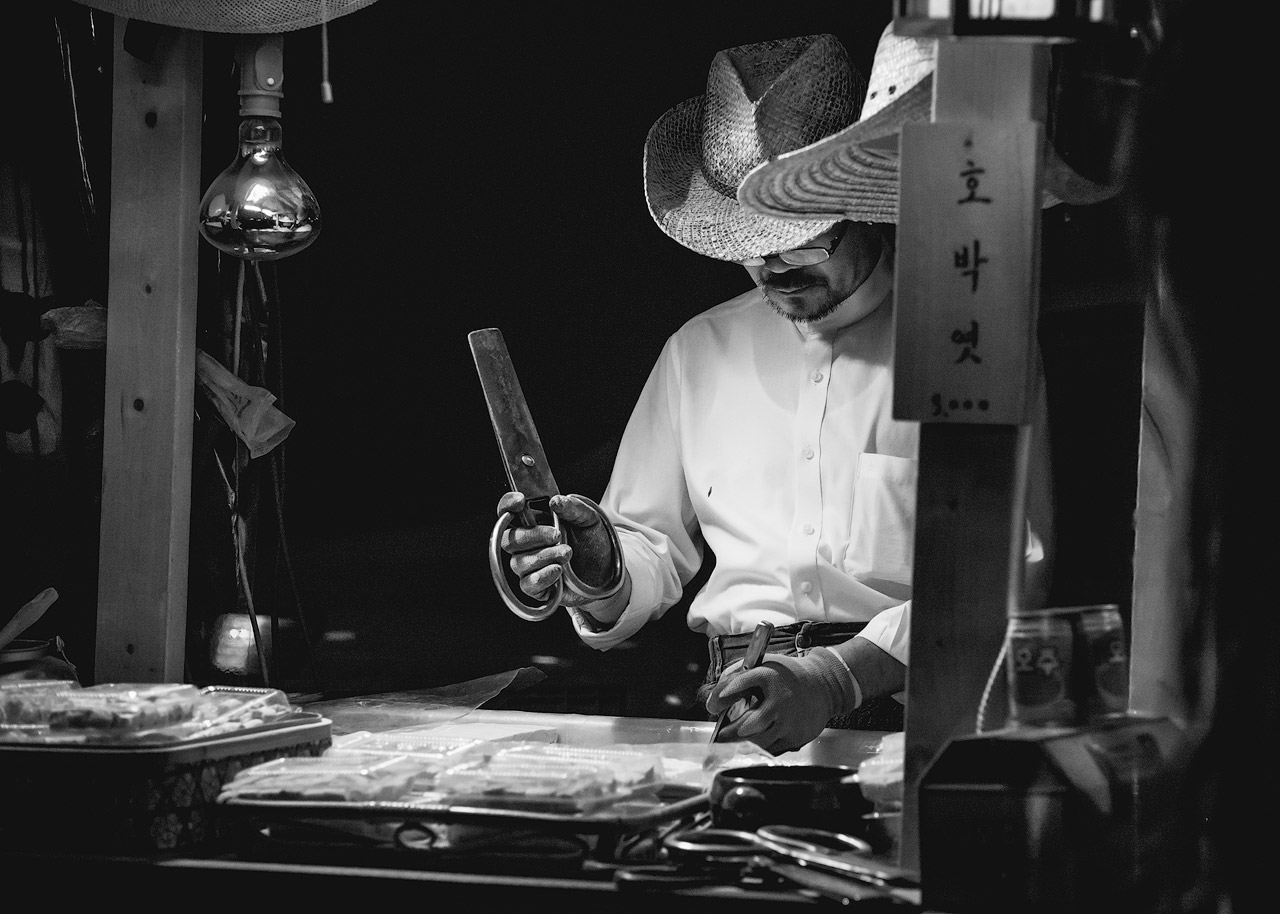
A traditional candy vendor selling ‘hobak yet’ (pumpkin taffy).
Day two: Forgotten Jeonju. A quick glance back to your guidebook and you’ll likely find a sentence or two glossing over Namgo Sanseong. Having hiked up to the mountain-top fortress myself, the lack of fanfare is bemusing; even Tourist Information had to look up it’s location when I called into their Taejo-ro office. The Korea Tourism Organization seems curiously unaware of the jewels in its crown, and it’s not the only noteworthy omission. Today’s tour will uncover another side to Jeonju, one that foreign tourists very rarely experience. Grab breakfast on-the-go and commence your day at Omokdae. Overlooking Hanok Maeul from the east, this hill-top shrine marks the spot where celebrations were held following the defeat of the Japanese pirates in 1380. From here, cross the bridge and pass through the kitsch, mural-plastered walls of the small hamlet on the other side. Quirky though it may be, this isn’t why you’re here. Continue uphill and take the first dirt-track steps on your left snaking up into the woodland. A rare treat will reveal itself after only a couple of minutes walking yet lays completely hidden from the road – an untouched, derelict shrine showered in dead, wilted leaves complete with burial mounds lurks within the mists of the forest. Standing watch over the city, you can’t help but feel this neglected structure was once of some importance. If you’ve lived or traveled in Asia for a while, I’d hazard a guess that “temple fatigue” has well and truly set in by now. To a certain extent, once you’ve seen one gaudy, renovated temple, you’ve seen them all. This curious relic of indiscernible past is a breath of fresh air. After continuing up the earthen track, winding through the misty birch forest whilst listening to the distant beating of gongs and barely audible chanting of monks in the valley-temples below, you’ll weave your way round to Hyeonbokdan. This tiny shrine clings to the rock face above the cool, crisp Jeonju River, and is accessed via tunnel just to the north. Once done here, continue south via Hyeonbok Bridge, crossing the road at your earliest convenience. Keep your eyes peeled for signs for Namgo-sa; once you’ve located the trailhead, it’s only a short hike to the peak (30-45 minutes depending on how quickly you tackle it). Once you’ve summited, you’ll find the remains of the Namgo Mountain Fortress, it’s walls encircling the amphitheater-like valley below, breaking only once, to provide a sheer, crumbling vantage point from which to peer into the depths below. So, too, you can see the serpentine remnants of the fortress walls snaking their way through the hills opposite, and spot tiny temples hidden in clearings in the woods. Climbing back to the top and tracking the wall south will bring you to Namgo-sa, the most noteworthy of the mountain’s Buddhist-temple offerings, having been an important site in Zen meditation following the Japanese invasions throughout the 16th century. Take a moment to light an incense candle and appreciate the serenity of your surroundings. For a glimpse at another of Jeolla’s famed characteristics, continue through the temple’s newly constructed archway, following the trail to ground-level. Nowhere is the region’s poverty more poignant than when gazing at the urban decay at the foot of Namgo Mountain, lying mere kilometres from the ritzy galleries and jaw-droppingly expensive craftshops of the Hanok village. Out of sight. Out of mind.
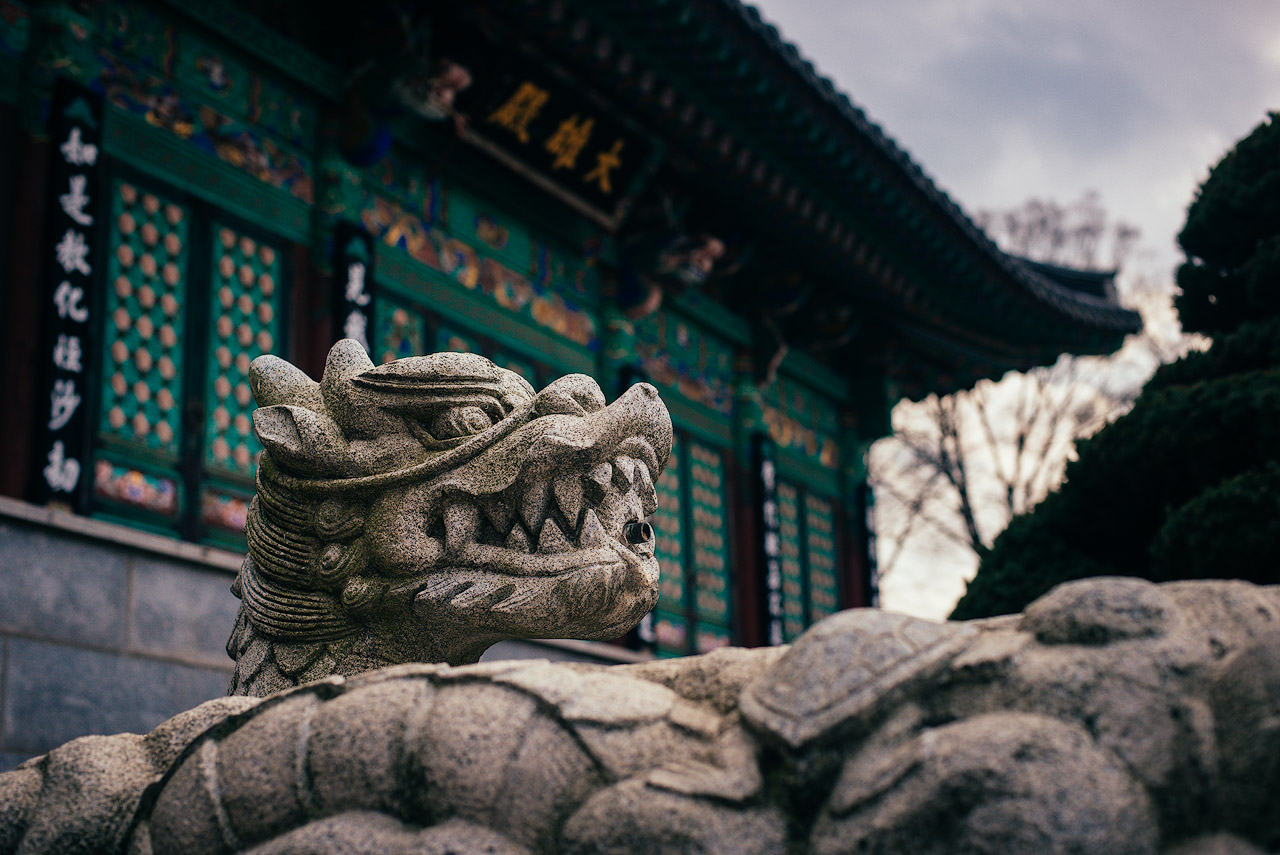
A dragon sculpture at Namgo Mountain Temple.
When to go:
Whilst there’s certainly no “wrong” time to visit, the city is at its most magical when blanketed with snow. The crowds thin out and the hanok are all the more charming under a wintery dusting. Only in the colder months can you appreciate the Korean affinity with the floor; the blissful warmth radiating through the ondol would be wasted at any other time of year. That said, don’t worry if you can’t make it in the snow, Jeonju will out-charm any other Korean city even on a bad day.
Where to stay:
No visit to Jeonju would be complete without the hanok experience. Whilst walking through the quaint back-alleys is a must, to truly appreciate these venerable beauts, you can only truly rewind time by booking a hanok stay. Tradition does seem to come at a premium, however; hanok accommodation does have a tendency to be overpriced, and choosing from the hundreds of options can be a little overwhelming. There are exceptions, though. For a centrally-located gem, look no further than Bukyungdang. For the price of a seedy love-motel, you can curl up in the cozy Omokdae room; and whilst there are certainly more traditional hanok, access to modern conveniences is not to be undervalued – I assure you that there is nothing endearing about squelching through a muddy courtyard in an inadequately small towel and flip-flops in the dead of Korean winter. With its private bathrooms, Bukyungdang is a snip at $47, and sleeps two; the knowledge and generosity of the host, Mr. Lee, will more than compensate for any small sacrifice in tradition. You’d do well to refrain from booking beyond your first night, but plan on staying longer. My travelling companion and I stayed three nights and were upgraded to one of the pricier rooms at no extra charge simply on the basis that they were empty. We were also plied with traditional Korean liquors and snacks throughout our stay; the owner couldn’t do enough for us. See the website for bookings.
Where to eat:
Jeolla’s reputation for its food is well-deserved, and there is no finer platform from which to explore it than Jeonju. Whilst local residents will rightly tell you the hanok village carries higher prices than elsewhere in town, you really can’t go wrong on cuisine when in this area; you’ll likely find it still boasts markedly better value than the city you’ve travelled from anyway, and most feasts-for-two will come in at less than $35. Not to be missed is the Jeonju Bibimbap; Hangukgwan on Taejo-ro has the widest selection, whilst Warojeongdam on Eunhaeng-ro will team it with Bulgalbi and an ungodly quantity of side-dishes for a veritable feast. Other worthy mentions are the Maeun Galbijjim at Omokdae Sarangchae (also on Eunhaeng-ro, look for the multi-coloured brick wall) and another local specialty, Gongnamul Gukbap, available at Sambaekjip (also Eunhaeng-ro; open 24 hours).The first meal you eat after leaving Jeolla just won’t be the same.

Jeonju Bibimbap, a local specialty.
If you’re more the “liquid-lunch” kind, be that coffee or alcohol, you’ll find yourself similarly well-catered for. There are a plethora of traditional teahouses in the area, though good coffee is harder to come by – The Dreaming Giraffe (꿈꾸는 기린) is your best bet to get your caffeine fix. The best watering hole in town is Tomorrow, overlooking the hanok village on its eastern perimeter. Boasting a western-facing balcony and roof-terrace, there’s no finer spot in the city to take in the sun setting over the charming hanok roofs. You’ll also want to try the local tipple, moju, while in town; it’s a makgeoli derivative laced with ginseng and cinnamon (think alcoholic liquid pumpkin pie); available at almost any eatery.
Daily Budget: $55 per person
This budget is based on two people sharing, the ideal travelling arrangement for Jeonju. Those travelling solo might find the city a slightly more expensive affair due to a lack of single accommodation and restaurants that cater to lone diners. $25 per person will bag you a berth in a cozy hanok with private bathroom (see above). Budget $30 per head if you want to eat well and sample the local delicacies, though a vast array of street food and marts are at hand if you need to keep a closer eye on the finances (local liquor, moju, sells for just $3 in most marts if you don’t want to stump up for more or less the same thing in the restaurants). Jeonju is totally navigable on foot. Be sure to budget $5 for each journey you make between Hanok Maeul and the city-centre bus terminals. All told, $55 will have you housed centrally and eating well; though the trip should be doable for less if you’re willing to make a few sacrifices like eating more modestly.
Getting there:
Served by both the intercity bus and rail networks, Jeonju is easily accessible from the larger hubs in Korea. Check with KoBus and KoRail respectively for schedules and pricing.

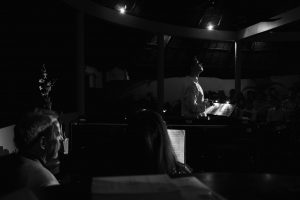

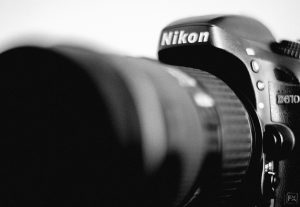
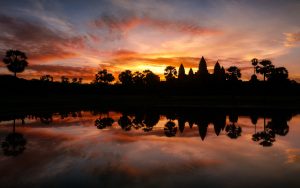
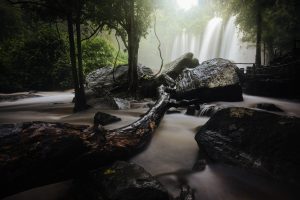
Wow, nice photos! Especially the B&W one.
Thanks! Unfortunately there won’t be too many more photographs made of those candy sellers… to say they’re a dying breed would be an understatement.